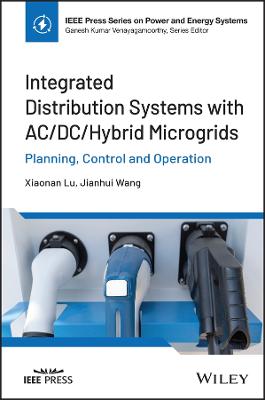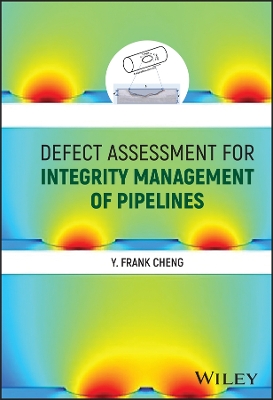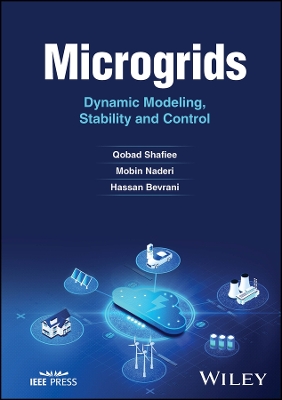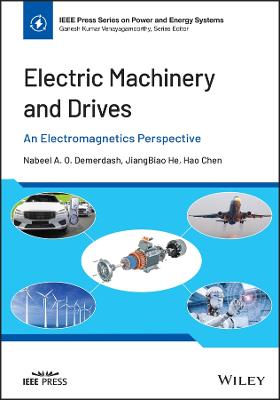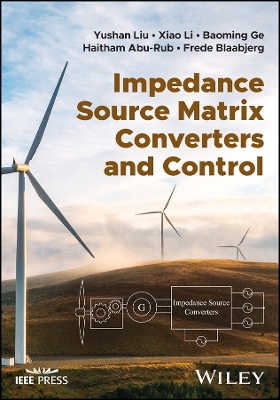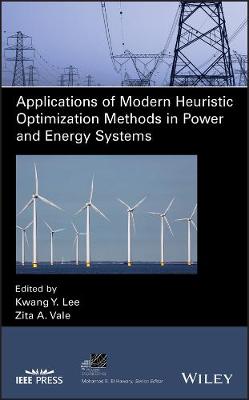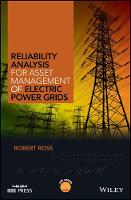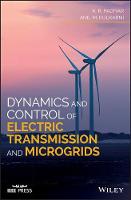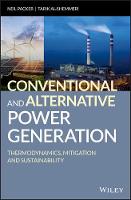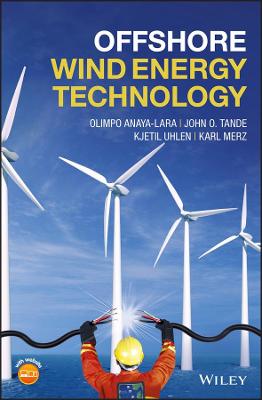Photovoltaics from Milliwatts to Gigawatts
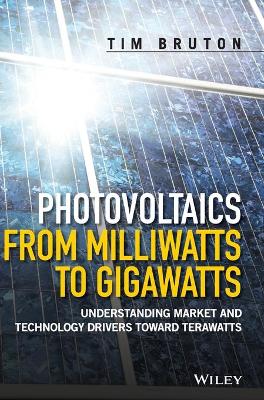 -15%
portes grátis
-15%
portes grátis
Photovoltaics from Milliwatts to Gigawatts
Understanding Market and Technology Drivers toward Terawatts
Bruton, Tim
John Wiley & Sons Inc
02/2021
240
Dura
Inglês
9781119130048
15 a 20 dias
566
Chapter 1 The Photovoltaics -the birth of a technology and its first application
1.1 Introduction
1.2 Sunlight and electricity
1.2.1 The early Years
1.2.2 The breakthrough to commercial photovoltaic cells.
1.2.3 The hiatus
1.2.4 The first successful market- Satellites
1.3 Photovoltaics demonstrates success.
1.3.1 First Commercial Operation
1.3.2 Solar Cell Manufacturing
1.4 Gallium Arsenide and III-V alloys for space.
1.4.1. Single Junction GaAs solar cells
1.4.2 Multi-junction Solar Cells for space.
1.5 Summary
1.6 References
Chapter 2 The Beginnings of a Terrestrial Photovoltaic Industry
2.1 Introduction
2.2 The 1973 Oil Crisis
2.3 The Way Ahead for Terrestrial PV Technology.
2.3.1 Basic Silicon PV manufacturing Process
2.3.2 The Low Cost Silicon Solar Array Project (FPSA).
2.3.2.1 Solar Grade Silicon
2.3.2.2 Silicon Sheet Wafers and Ribbons
2.3.2.3 High Efficiency Solar Cells
2.3.2.4 Process development
2.3.2.5 Engineering Sciences and Reliability.
2.3.2.6 Module Encapsulation
2.3.2.7 Cost Goals
2.4 Rise of the USA PV Manufacturing Industry
2.5 Developments in Europe
2.5 Developments in Europe
2.6 The transition in cell technology from space to terrestrial applications
2.7 Alternatives to Silicon for Solar cells
2.8 Summary
2.9 References
Chapter 3 The Early PV global market and manufacturers
3.1 Introduction
3.2 Off Grid Professional Market
3.2.1 Navigation aids.
3.2.2 Microwave Repeater Stations
3.2.3 Cathodic Protection
3.2.4 Other Applications.
3.2.5 Early Grid Connected application
3.3. Off Grid social applications
3.3.1 Solar Home systems
3.3.2 Water Pumping
3.2.3 Consumer Electronics
3.4 Summary
3.5 References
Chapter 4 Silicon Technology Development to 2010
4.1 Introduction
4.2 Technologies supplying the global market.
4.3 Advantages of silicon as a solar cell material.
4.3.1 Availability
4.3.2 Elemental semiconductor
4.3.3. Non-toxic
4.3.4 Self passivating oxide
4.3.5 Synergy with global semiconductor industry.
4.4 Silicon Solar Cell Design Features
4.5 Silicon Solar cell manufacturing from 1980 to 1990.
4.6 Developments in Manufacturing Technology
4.6.1 Silicon Feedstock
4.6.2 Crystallisation
4.6.3 Wafering
4.6.4 Anti-Reflection Coating (ARC)
4.6.5 Solar Cell Development to 2000
4.6.5.1 Cz-Cell Development
4.6.5.2 Multicrystalline Silicon Processing
4.6.5.3 Integration of mono and multicrystalline silicon processes.
4.6.5.4 Other process technology changes
4.7 Module Technology
4. 8 Summary
4.9 References
Chapter 5 The Current Status of PV Systems
5.1 Introduction
5.2 The off-grid market
5.3 The decentralised grid connected market.
5.3.1 Research Phase 1974-1989
5.3.2 The Demonstration Phase 1989-2000
5.3.3 Decentralised Grid connected market 2000- 2019: The Commercial phase
5.3.2.1 The achievement of grid parity
5.3.2.2 Resolution of the silicon feedstock supply.
5.4 Utility Scale Grid connected PV systems
5.5 Novel applications
5.6 Summary
5.7 References
Chapter 6 History of incentives for PV
6.1 The Chicken and egg problem
6.2 Capital Subsidies on system purchase
6.3 Feed-in-Tariffs.
6.4 Power Purchase Agreements and other Incentives for large scale systems.
6.5 Summary
6.6 References
Chapter 7 Difficulties of Alternative Technologies to Silicon
7.1 Introduction
7.2 Sheet Silicon Processes.
7.2.1 Direct crystallisation of silicon sheet.
7.2.1.1 Westinghouse Dendritic Web
7.2.1.2 Edge Defined Foil Growth (EFG)
7.2.1.3 String Ribbon Technology
7.2.2 Cast Silicon sheet
7.2.2.1 Hoxan Casting process.
7.2.2.2 Ribbon Growth on Substrate(RGS)
7.2.2.3 Direct Wafer (TM)
7.2.2.4 Lift Off wafer technology
7.3 Thin film Solar Cell Technologies
7.3.1 Copper Sulphide Solar Cells
7.3.2 Amorphous Silicon
7.3.3 Amorphous Silicon Manufacturing
7.3.4 Manufacturing the amorphous silicon microcrystalline silicon tandem cell
7.3.5 Thin film crystalline silicon
7.3.6 Copper Indium Gallium Diselenide (CIGS).
7.3.6.1 CIGS Manufacturing
7.3.7 Cadmium Telluride Technology
7.3.7.1 Cadmium Telluride Commercial production.
7.4 Dye sensitised Solar Cells (DSSC)
7.5 Polymer (Organic) Solar Cells (OPV)
7.6 Perovskite (PVK)Solar Cells
7.7 Concentrator technology
7.8 Summery
7.9 References
Chapter 8 Current status of crystalline silicon manufacturing and future trends
8.1 Introduction
8.2 Approaches to high efficiency silicon solar cells on p type silicon wafers.
8.2.1 Laser Grooved Buried Contact (LGBC) Solar Cells
8.2.2 Selective Emitters
8.2.3 PERL and PERC Solar Cells
8.2.4 Industrial Manufacture of PERC Cells.
8.2.5 Bifacial Module Technology
8.2.6 Light Induced Degradation
8.3 Solar cells with n type silicon
8.3.1 Silicon Heterojunction (SHJ) solar cells
8.3.2 Rear Junction Silicon Heterojunction solar cells (IBC-SHJ)
8.3.3 N type IBC cells without amorphous silicon passivation
8.4 The future of PV technology towards Terrawatts
8.4.1 III-V Tandems on Silicon
8.4.2 Silicon Tandems using perovskites
8.5 Silicon Module Reliability
8.6 Summary
8.7 References
Chapter 9 The Lessons Learnt
9.1 introduction
9.2 Role of governments
9.3 Role of the Research Community
9.4 The role of manufacturing Industry in Europe and the USA
9.5 Role of China as a PV manufacturing base.
9.6 Potential for continues market growth
9.7 Future Technology Development
9.8 Final analysis
9.9 References
Index
Chapter 1 The Photovoltaics -the birth of a technology and its first application
1.1 Introduction
1.2 Sunlight and electricity
1.2.1 The early Years
1.2.2 The breakthrough to commercial photovoltaic cells.
1.2.3 The hiatus
1.2.4 The first successful market- Satellites
1.3 Photovoltaics demonstrates success.
1.3.1 First Commercial Operation
1.3.2 Solar Cell Manufacturing
1.4 Gallium Arsenide and III-V alloys for space.
1.4.1. Single Junction GaAs solar cells
1.4.2 Multi-junction Solar Cells for space.
1.5 Summary
1.6 References
Chapter 2 The Beginnings of a Terrestrial Photovoltaic Industry
2.1 Introduction
2.2 The 1973 Oil Crisis
2.3 The Way Ahead for Terrestrial PV Technology.
2.3.1 Basic Silicon PV manufacturing Process
2.3.2 The Low Cost Silicon Solar Array Project (FPSA).
2.3.2.1 Solar Grade Silicon
2.3.2.2 Silicon Sheet Wafers and Ribbons
2.3.2.3 High Efficiency Solar Cells
2.3.2.4 Process development
2.3.2.5 Engineering Sciences and Reliability.
2.3.2.6 Module Encapsulation
2.3.2.7 Cost Goals
2.4 Rise of the USA PV Manufacturing Industry
2.5 Developments in Europe
2.5 Developments in Europe
2.6 The transition in cell technology from space to terrestrial applications
2.7 Alternatives to Silicon for Solar cells
2.8 Summary
2.9 References
Chapter 3 The Early PV global market and manufacturers
3.1 Introduction
3.2 Off Grid Professional Market
3.2.1 Navigation aids.
3.2.2 Microwave Repeater Stations
3.2.3 Cathodic Protection
3.2.4 Other Applications.
3.2.5 Early Grid Connected application
3.3. Off Grid social applications
3.3.1 Solar Home systems
3.3.2 Water Pumping
3.2.3 Consumer Electronics
3.4 Summary
3.5 References
Chapter 4 Silicon Technology Development to 2010
4.1 Introduction
4.2 Technologies supplying the global market.
4.3 Advantages of silicon as a solar cell material.
4.3.1 Availability
4.3.2 Elemental semiconductor
4.3.3. Non-toxic
4.3.4 Self passivating oxide
4.3.5 Synergy with global semiconductor industry.
4.4 Silicon Solar Cell Design Features
4.5 Silicon Solar cell manufacturing from 1980 to 1990.
4.6 Developments in Manufacturing Technology
4.6.1 Silicon Feedstock
4.6.2 Crystallisation
4.6.3 Wafering
4.6.4 Anti-Reflection Coating (ARC)
4.6.5 Solar Cell Development to 2000
4.6.5.1 Cz-Cell Development
4.6.5.2 Multicrystalline Silicon Processing
4.6.5.3 Integration of mono and multicrystalline silicon processes.
4.6.5.4 Other process technology changes
4.7 Module Technology
4. 8 Summary
4.9 References
Chapter 5 The Current Status of PV Systems
5.1 Introduction
5.2 The off-grid market
5.3 The decentralised grid connected market.
5.3.1 Research Phase 1974-1989
5.3.2 The Demonstration Phase 1989-2000
5.3.3 Decentralised Grid connected market 2000- 2019: The Commercial phase
5.3.2.1 The achievement of grid parity
5.3.2.2 Resolution of the silicon feedstock supply.
5.4 Utility Scale Grid connected PV systems
5.5 Novel applications
5.6 Summary
5.7 References
Chapter 6 History of incentives for PV
6.1 The Chicken and egg problem
6.2 Capital Subsidies on system purchase
6.3 Feed-in-Tariffs.
6.4 Power Purchase Agreements and other Incentives for large scale systems.
6.5 Summary
6.6 References
Chapter 7 Difficulties of Alternative Technologies to Silicon
7.1 Introduction
7.2 Sheet Silicon Processes.
7.2.1 Direct crystallisation of silicon sheet.
7.2.1.1 Westinghouse Dendritic Web
7.2.1.2 Edge Defined Foil Growth (EFG)
7.2.1.3 String Ribbon Technology
7.2.2 Cast Silicon sheet
7.2.2.1 Hoxan Casting process.
7.2.2.2 Ribbon Growth on Substrate(RGS)
7.2.2.3 Direct Wafer (TM)
7.2.2.4 Lift Off wafer technology
7.3 Thin film Solar Cell Technologies
7.3.1 Copper Sulphide Solar Cells
7.3.2 Amorphous Silicon
7.3.3 Amorphous Silicon Manufacturing
7.3.4 Manufacturing the amorphous silicon microcrystalline silicon tandem cell
7.3.5 Thin film crystalline silicon
7.3.6 Copper Indium Gallium Diselenide (CIGS).
7.3.6.1 CIGS Manufacturing
7.3.7 Cadmium Telluride Technology
7.3.7.1 Cadmium Telluride Commercial production.
7.4 Dye sensitised Solar Cells (DSSC)
7.5 Polymer (Organic) Solar Cells (OPV)
7.6 Perovskite (PVK)Solar Cells
7.7 Concentrator technology
7.8 Summery
7.9 References
Chapter 8 Current status of crystalline silicon manufacturing and future trends
8.1 Introduction
8.2 Approaches to high efficiency silicon solar cells on p type silicon wafers.
8.2.1 Laser Grooved Buried Contact (LGBC) Solar Cells
8.2.2 Selective Emitters
8.2.3 PERL and PERC Solar Cells
8.2.4 Industrial Manufacture of PERC Cells.
8.2.5 Bifacial Module Technology
8.2.6 Light Induced Degradation
8.3 Solar cells with n type silicon
8.3.1 Silicon Heterojunction (SHJ) solar cells
8.3.2 Rear Junction Silicon Heterojunction solar cells (IBC-SHJ)
8.3.3 N type IBC cells without amorphous silicon passivation
8.4 The future of PV technology towards Terrawatts
8.4.1 III-V Tandems on Silicon
8.4.2 Silicon Tandems using perovskites
8.5 Silicon Module Reliability
8.6 Summary
8.7 References
Chapter 9 The Lessons Learnt
9.1 introduction
9.2 Role of governments
9.3 Role of the Research Community
9.4 The role of manufacturing Industry in Europe and the USA
9.5 Role of China as a PV manufacturing base.
9.6 Potential for continues market growth
9.7 Future Technology Development
9.8 Final analysis
9.9 References
Index

